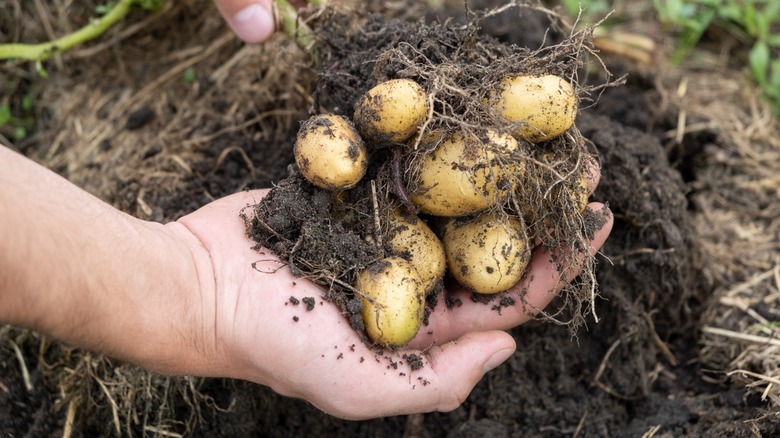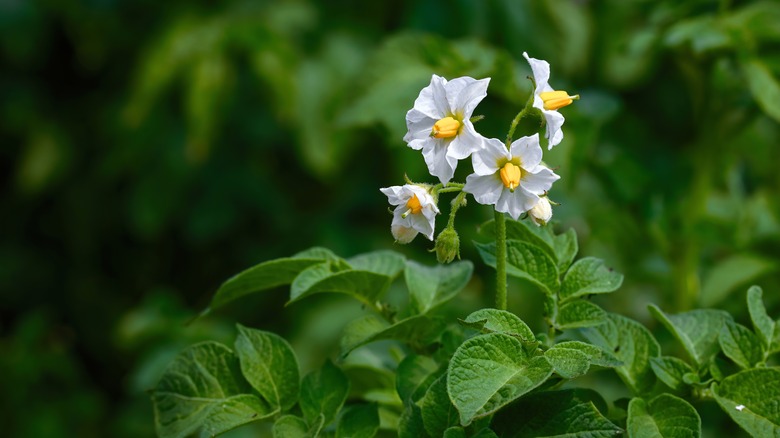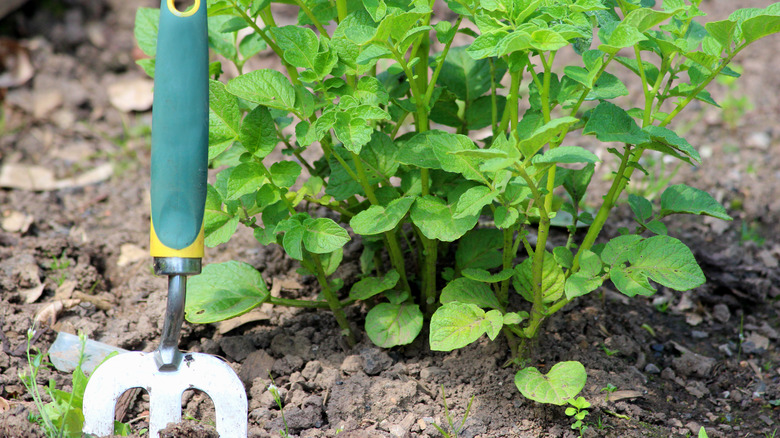Easy Tips To Know When It's Time To Harvest New Potatoes
Potatoes are a beloved staple crop for good reasons: not only are they easy to grow, but they can be harvested at multiple different stages, providing you with spuds all summer and autumn. While potatoes often take over 100 days to fully mature, you can harvest new potatoes as little as seven weeks after planting, making them a fantastic crop that you don't have to wait all season for. The best way to know your new potatoes are ready to harvest is to wait until after the fruits fall from the potato plants and the ground around the plants begins to split. Additionally, don't be afraid to dig up a small section to check the tubers or harvest just one or two new potatoes; just be sure you don't leave the tubers exposed to light for too long.
New potatoes are not a different species or even cultivars from other potatoes. It's simply a term to describe younger and less mature spuds. These new potatoes have softer skin than mature potatoes, and while they are delicious, be aware that they don't store well. If you want potatoes, you can cure them for storage; be patient and harvest your potatoes once they are fully mature and the vines have died back and dried.
Signs your new potatoes are ready
Potatoes (Solanum tuberosum) are close relatives of tomatoes and are one of many nightshade vegetables that are perfect for your garden. The relationship between potatoes and tomatoes is especially obvious once potato plants begin to flower and fruit. Despite the fruit's similarities to tomatoes, it isn't safe to eat. Potato fruits can still be useful as an indicator, though, as once the fruits fall from the plants, that is an excellent sign that you're ready to begin harvesting new potatoes.
Another excellent indicator to look for is the splitting and cracking of the soil around the potato plant. These cracks form due to the spuds growing under the ground and show that the tubers are quickly putting on weight and displacing the soil. This is especially easy to see in clay soils, though if you look carefully, you should also be able to see changes in other types of soil as well.
Dig up a potato and check
If all signs point to your garden being full of tasty new potatoes, then why not dig up a few and check? To avoid damaging the spuds, opt for a garden fork over a shovel for digging, and be sure to dig beside the potato plant instead of simply digging up the whole plant. The best time to do this is when your garden soil is relatively dry and the weather is warm.
By digging up just a few of the potatoes furthest from the plant, you can enjoy some new potatoes early in the season and allow the rest of your bountiful potato harvest to continue maturing. Just be sure to cover back up any tubers you accidentally exposed while hunting for your new potatoes and move your harvested potatoes out of direct sun immediately. Potatoes quickly turn green and inedible in sunlight.


